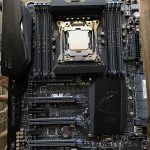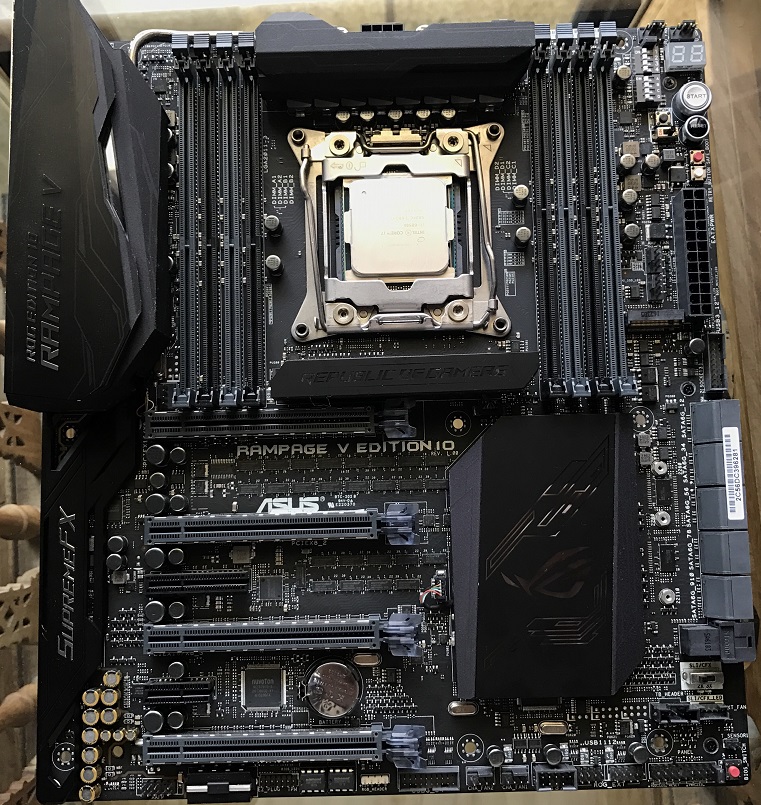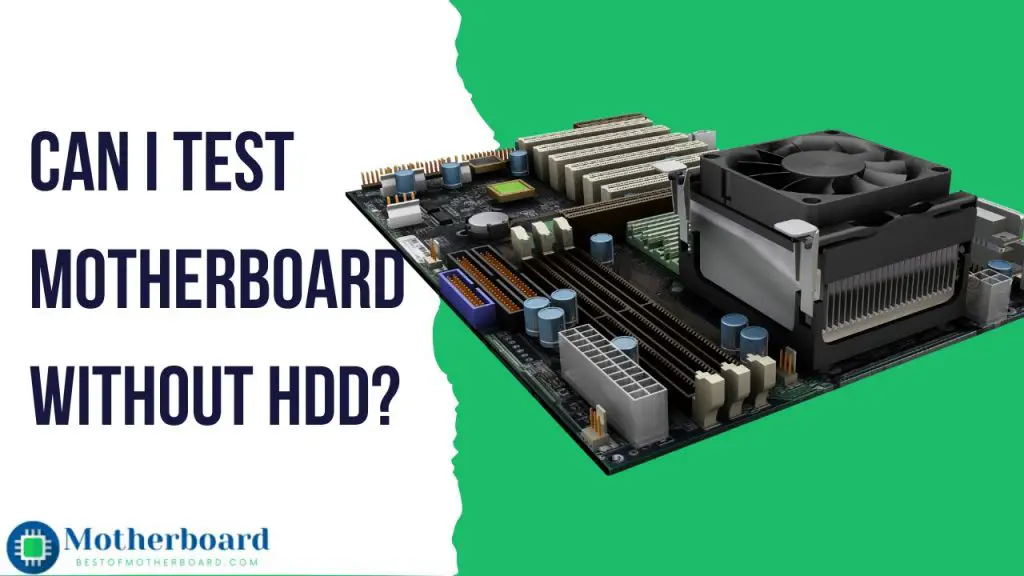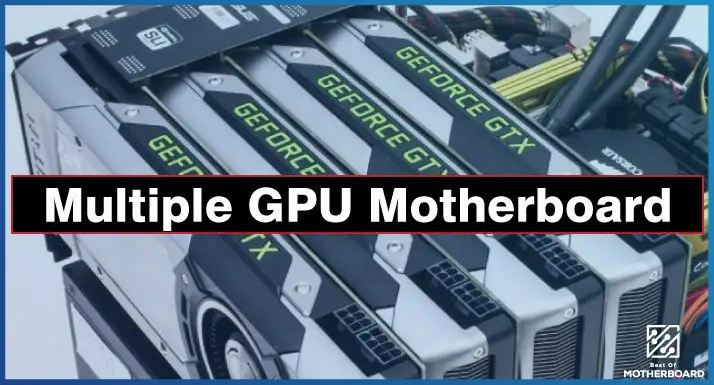Can You Test Your New Motherboard Without HDD?

Yes, You can test your new motherboard without HDD by installing the CPU, CPU heatsink, and RAM and connecting only the 4(+4) pin CPU power and 20(+4) pin motherboard power cables to the power supply Unit (PSU). You should connect a mouse and monitor to the motherboard. Then, depending on your motherboard, you can press either F10, F2, F12, F1, or DEL to access the BIOS. There, you can check the temperature of the CPU, which shows how well the thermal paste was put on.
If you want to test your motherboard without HDD, you can do it without damaging it as long as your Processor is well placed on the motherboard.
This post will explain everything you need to know about testing your motherboard without HDD or SSD.
The hard disk drive (HDD) is not required to test the motherboard. The motherboard can be examined without an HDD. A hard disk’s primary function is to store data, which is not necessary to test the motherboard.

While HDD is necessary for a computer to boot completely, you can test your motherboard without HDD. You can test your motherboard without a CPU if your motherboard comes with a BIOS flash memory.
A hard drive is where the operating system is installed; without it, you can only boot your computer into BIOS. However, you can still test your motherboard without a hard drive; you will not cause any damage to your motherboard.
Also, if you want your motherboard to boot without an internal HDD, you can use external devices through a USB drive, DVD, or CD. So, you do not necessarily need HDD to test whether your motherboard is working. Just make sure to install your motherboard correctly.
3 Ways To Test Motherboard Without HDD
A motherboard is the central component of your computer and is responsible for connecting all other system components. If your motherboard is malfunctioning, it can lead to numerous issues with your computer. Therefore, it is essential to know how to test your motherboard to ensure it is functioning properly.
You can test your motherboard without the HDD being installed in a few different ways.
1. Boot Motherboard To BIOS
You can boot your motherboard to BIOS as long as the motherboard has BIOS flash memory. Here is the step to follow:
- Press the power button to get the computer started
- Immediately after pressing the power button, start pressing the F10. ESC, F1, F2, or F8 key (depending on your computer manufacturer) continuously to enter BIOS
2. Test A Motherboard Without A CPU Or HDD
To test your motherboard without a CPU, you can follow these steps:
- Place your motherboard on its box or a non-conductive surface
- Plug in the 8-pin CPU connector and the 24-pin motherboard connector
- Connect the power supply unit to a wall outlet
- Use the case Power Switch cable or manually jumpstart the motherboard to turn it on
- If a blinking LED light shows or you hear a beep sound, your motherboard is working
3. Boot Motherboard With A Bootable USB Device
Booting from a bootable USB device means that your PC is running with the OS installed on the bootable USB device. To boot your motherboard from a USB device, you have to create a bootable USB drive and then follow these steps:
- If your PC is not already in the USB boot option, you must change the boot option from BIOS to USB. To enter the BIOS, start your computer and immediately begin pressing the F10 continuously. Depending on your PC manufacturer, ESC, F1, F2, or F8 keys. Once you enter the BIOS, look for the boot order and change it to USB.
- Attach the bootable USB device to the computer by plugging it into one of the USB ports
- Restart the computer by following the keys that BIOS asks you to press
- Be sure to pack the key BIOS asks you to press immediately, else the booting order will change back to the next boot order
- Your computer should boot now from the bootable USB drive
Can Your Computer Run Without The Hard Drive?
The short answer is yes, a computer can run without a hard disk for only minimal operation. However, the hard disk is an essential component of a computer system, as it stores all the data and files the machine uses. Without a hard disk, a computer would not be able to function correctly.
The hard disk is responsible for storing the computer’s data, including the operating system, application files, and user data. Without a hard disk, the computer would have nowhere to keep these essential files and would not be able to access them when needed.
So, while a computer can technically run without a hard disk, it would not be able to do much of anything without one.
How To Enter BIOS Without Hard Drive
Upon powering on the computer, wait for the BIOS splash screen to appear. This is the screen that displays the logo of the computer manufacturer. As soon as the BIOS splash screen appears, press the F2 key. Continue pressing the key until the BIOS Settings menu appeaYou can also try the DEL key if. If the F2 key does not crucial.
Most BIOS are configured to detect a hard drive automatically. If your computer does not have a hard drive, you can still enter BIOS without one. You will need to boot your computer from a USB drive or Floppy disk to do this. Once your computer is booted from the USB drive or floppy disk, you can enter BIOS without an internal hard drive.
How To Run Computer Without Hard Disk [ Watch Video ]
It is possible to run a computer without a hard disk. You can do this by using a live CD or a live USB drive. A live CD is a CD that contains a bootable operating system. A live USB drive is a USB drive that has a bootable operating system.
Running a computer without a hard disk is helpful in several situations. For example, if a hard disk is damaged or corrupted, it can be beneficial to boot from a live CD or live USB drive to access the hard disk’s data.
Also, if a computer has a virus, starting up from a live CD or live USB drive can help keep the virus from spreading to the operating system on the hard drive. You can watch this YouTube video to learn how to run a computer without a hard disk.
Can A Laptop Turn On Without A Hard Drive
It is possible to turn on a laptop without a hard drive unless it is an old G4 processor MacBook. You can boot the computer from a USB drive or another external storage device. If the computer does not have a hard drive, it will not be able to store any data or files.
What Does It Mean When A Laptop Has No Hard Drive
A laptop without a hard drive is, quite simply, a laptop that does not have a built-in storage device. This means that the only way to store files on the computer is by using an external storage device, such as a flash drive or an SD card. While this may seem a disadvantage, a few benefits to using a laptop without a hard drive exist.
For one, laptops without hard drives are typically lighter and more portable than laptops with hard drives. This is because hard drives are often one of the heaviest components in a laptop, so removing them can make a big difference in the overall weight.
Also, laptops without hard drives tend to use less power than those with hard drives, which can be a significant advantage if you use your computer for long periods.
How Can I Test My Motherboard?
If your computer is having issues starting up, one of the first things you should do is test your motherboard. This can be done using a simple process known as the POST test. The POST test is a way to check if your motherboard’s parts are working correctly. If the POST test finds an error, it will usually give you a beep code that can help you diagnose the problem.
To run the POST test, you must restart your computer and go into the BIOS setup utility. Once in the BIOS, look for the POST test option and run it.
The POST test will take a few minutes to complete, and if everything is working correctly, you should see a message that says, “All tests passed.” If you see any errors, write down the beep code and look in the manual for your motherboard to see how to fix them.
Conclusion
So, if you are looking for an answer to, “can I test the motherboard without HDD? We have already explained everything you need to know. You can test a motherboard without an HDD using a bootable USB drive. You can create a bootable USB drive with a tool like Rufus or Etcher.
Once you have created the bootable USB drive, you can boot your computer from it. This will allow you to test the motherboard without an HDD. If your computer does not have a hard disk in the CPU, you can easily use a USB disk, CD, DVD, or PEN-Drive to boot your computer.



![What Are Motherboard Standoffs? [Guide] 5 What Are Motherboard Standoffs](https://bestofmotherboard.com/wp-content/uploads/2022/01/What-Are-Motherboard-Standoffs.jpg)
![Does it Matter Which PCIe x16 slot I Use? [Guide] 6 Does it Matter Which PCIe x16 slot I Use](https://bestofmotherboard.com/wp-content/uploads/2022/01/Does-it-Matter-Which-PCIe-x16-slot-I-Use.jpg)